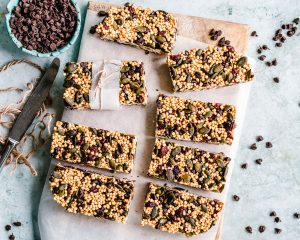Should you train your core?
Yes! You should be training your core.
The core is the most misunderstood muscle in the body. Other than having abs for aesthetics we tend to forget how important these muscles are.
In this post I’m going to explain what the core is, why it is so important, why abs are hard to ‘get’, and how to include them in your workout routine.

Special mention: Thank you to my boyfriend Jacob (pictured above) for featuring in this post. He is currently ‘cutting’ for a body building competition 👀
Why a strong core is important
There are many benefits to having a strong core such as:
- Reduce back pain
- Improve posture
- Improve balance and stability
- Improve athletic performance
- Improve pelvic control
These are all common issues and can impact your comfort, confidence, and abilities. If you are experiencing any of the above, it may be best to first consult with your medical professional.
An unsolicited video of me doing an L sit to V sit. This move uses core strength + flexibility.
What is the core?
The core consists of over 20 muscles including the regions of your pelvis, lower back, hips and stomach.
We often refer to the core as abs, six pack, or more formally, the abdominal. Abs, short for abdominals, are the visible ‘six pack’ that super lean people have, and many people aspire to obtain.
The core is not just the visible ‘six pack’, it also wraps around the midsection and goes deep into your body. As you can see in the image to the right, the core consists of:
Transverse abdominals
Stabilize the spine and pelvis as well as protect and keep internal organs in place. They are the deep core muscles.
Rectus abdominals
Located just beneath the skin and is the visible part of the core.
External and internal oblique muscles
Also known as ‘side abs’ as they are located on either side of the rectus abdominals. They work together to allow the body to twist.
Multifidus
Are deep back muscles that allow movement of the spine and work with the pelvic floor and transverse abdominals to stabilize the spine.
Pelvic floor
Supports the bladder and bowel. It is the most likely part of the core to become weak, especially in women, as it is working against gravity. If you have a weak pelvic floor, kegal exercises may greatly benefit you as well as a guided plan from a physiotherapist.
Diaphragm
Yep! Even the diaphragm, which helps you breathe, is a part of the core. It helps you stabilize the core when bracing.
All of these muscles work together to function. It is important for them to all be equally strong to function optimally and avoid compensation and imbalances.
How to switch on the core
As a ex gymnast, it is ingrained into me to always ‘squeeze’ or brace my core during any movement. Not only is it important to squeeze your core, but also your glutes, as this ensure your body is in a strong position and protecting your back.
I am always reminding my PT clients to ‘squeeze’ their core during pretty much every exercise. However, often people don’t actually know how to ‘squeeze’ the core. It can be tricky to understand at first. Rather than just tensing the core, think about tensing and also pulling your belly towards your back at the same time. Rather than a downward motion, you should feel a down and back motion. You can try doing this just now while you’re sitting.
To test this, lay on your back with you knees bent. Roll your hips forward so your back is flat on the ground and squeeze your glutes. Tense your core and think of pulling belly button to the ground. You should not be able to fit your hand through your lower back. If your lower back is arching off the ground, it is a sign that the core is not properly engaged. This arching can happen during exercises, so it is best to stop or at least have a break to avoid injury until and maintain proper technique.
Skip to the list of helpful core exercises here
Why are abs so hard to get?
There are several reasons why visible abs are so hard to get. Abs are often unsustainable to achieve and maintain. You need a low body fat percentage to have visible abs.
Fat is an essential part of the body. Fat helps to keep us warm, absorb certain nutrients, and is important for reproduction. While having too much fat is unhealthy, having too little can be unhealthy as well. As you can see, there is a line between being healthy, overweight, and too lean.
The average person needs 5-15% body fat to achieve viable abs. This will vary person to person, as well as your goal. Some people want the full six pack while some are happy with ‘side abs’.
The healthy level of body fat you NEED is 10-22% for men and 20-32% for women. However, this is just a guide, and again, each individual will be different.
For females, anything lower than 10% is dangerous. It can result in energy and hormone imbalances, loss of menstrual cycle which impact on bone health, as well as and a range of other health concerns.
As I’m sure we have all heard, ‘abs are made in the kitchen’. Diet is certainly a big part of the puzzle. If you are eating in a calorie surplus, doing not much exercise, then yes, abs are going to be very difficult to achieve. Unfortunately, here is no secret to achieving abs, it comes back to the standard list consisting of:
- Low body fat percentage
- Genetics
- Diet
Overall, having visible abs is unsustainable for many people and it is also likely to be unhealthy. A strong core is important, but visible abs are not necessarily an indication of a strong and functional core.
Common questions
1. Don’t I train the core doing other exercises?
An argument I have seen going around is that doing any exercise, even squats, use core muscles, therefore you do not need to train them specifically. Yes, you do use your core during compound exercises for stabilization, but this is no reason to skip out core training. In fact, having a weak core can, and does affect form and stability when performing such exercises, which can and does lead to lower back pain. So no, not training core specifically is not enough to develop a strong core.
2. Are crunches a good core exercise?
As we mentioned, there are a lot of core muscles. Crunches target only the rectus abdominus and obliques. While the crunches get a lot of hate for being non-functional, they can help you build muscle and give and give you the ‘pump’ effect. It is true that there are better core exercises for training the core functionality and targeting deeper core muscles.
3. How often should I train core?
You do not need to spend hours in the gym training core. 5-15minutes is all you need. Do this 2-3 times a week. Pick 2-4 core exercises and perform 2-3 sets. For isometric holds (e.g. plank holds) hold anywhere from 20-60s depending on your level of strength. For other exercises perform anywhere from 8-20 reps depending on the difficulty of the exercise and your current strength level.
4. Can I spot reduce fat?
Some people believe that targeting certain muscles will slim that particular area. This is simply not possible as they body is not able to ‘spot reduce’ fat. You need to lose weight overall for this to happen. If you think about emptying a pool of water, you need to empty the pool as a whole, you cannot remove water from one spot and expect only that area to empty.
Core exercises
Ok, with that all said, which exercises should you be doing to be working all of the core muscles?
Below is a list of exercises suited from beginner through to advanced core strength. Even of you have a strong core, it is still a good idea to work on the more basic exercises, but if you have weaker core and are starting from the beginning, then master the basic exercises before moving onto advanced exercises to avoid injury or strain.
Beginner core exercises
- Bent knee dish hold
- Dead bugs
- Bird dogs
- Supermans
- Glute bridges
- Glute bridge marches
- Supine marches
- Bent knee taps
- Bear hold
- Plank hold
- Side plank (knees bent on the ground)
- Low boat to high
- Resistance band pallof press
Example beginners’ routine:
10 bird dogs, 20s bear hold, 10 supine marches, 20s side plank (on knees) repeat x3
Intermediate core exercises
- Dish hold arms by side
- Core extensions with arms
- Pallof press (cable)
- Superman w’s
- FB deadbug
- FB jackknives
- Laying leg raises
- FB plank hold
- Side plank
- V snaps
- Plank hip dips
- Standing side bends weighted
- Bicycle crunches
- TRX roll outs
- Mountain climbers
- Parallel bar knee tucks
Example intermediate workout:
10 TRX roll outs, 10 p-bar knee tucks, 20 plank hip dips, 10 superman w’s ] x3
Advanced core exercises
- Dish hold arms by ears
- MB core extensions
- FB passes
- FB pike
- FB stir the pot
- FB plank extensions
- Hanging leg raises
- Around the worlds
- Extended plank hold
- Side plank + knee drives
- Side plank dips
- Pike/ straddle hold
- Ab wheel
- Mountain climbers on a stability ball
Example advanced core workout:
10 hanging leg raises, 10 fitness ball stir the pot L&R, 15 fitness ball passes, 30 Mountain climbers on BOSU ball] x3
I hope this post has helped you understand more about your core, how to incorporate them into your workout, and feel good about the benefits a strong core provides!
Let the posts come to you
Recent posts

Healthy snacking
Snacking can get a bad rap. It is true that snacking can lead to weight gain and a poor-quality diet, however, the reverse is also true.
Snacks can certainly be a part of a healthy and balanced diet.
In this post, I am going to explain how to include snacks as a part of a nutritious and balanced diet.

Good vs bad food
In this post I’m going to explain why there is no such thing as good or bad foods and how this shift in mentality can help your relationship with food.

Are nuts bad for me?
Nuts can be protective against heart disease, cognitive health and can have a positive effect on weight control.